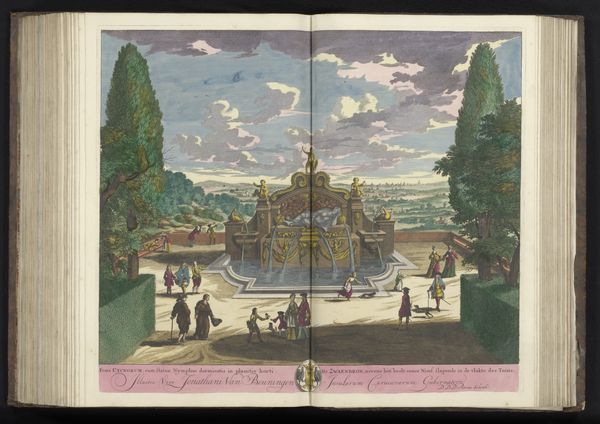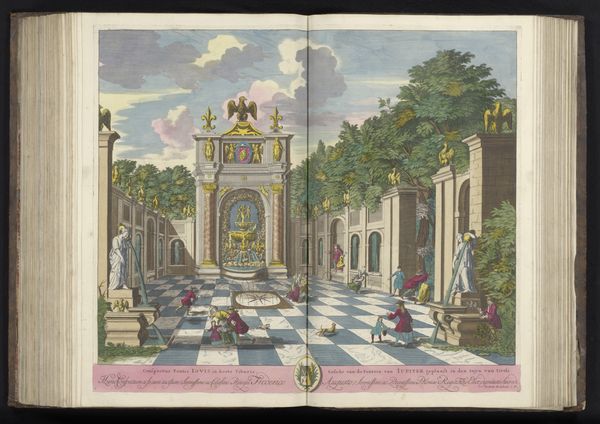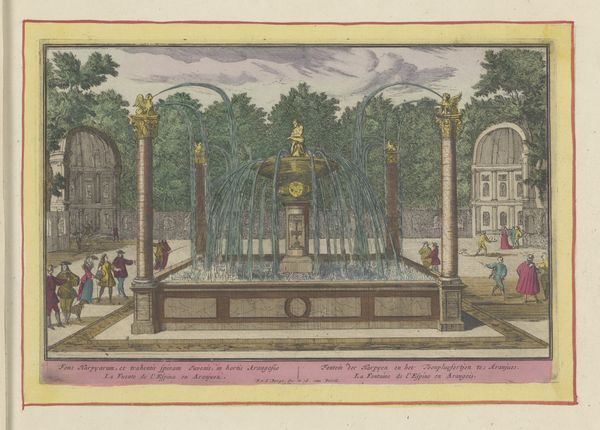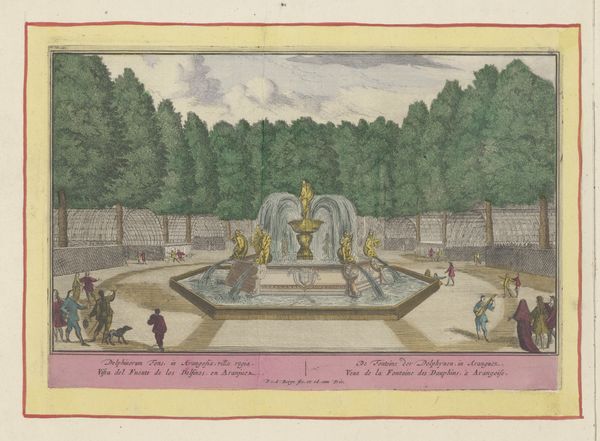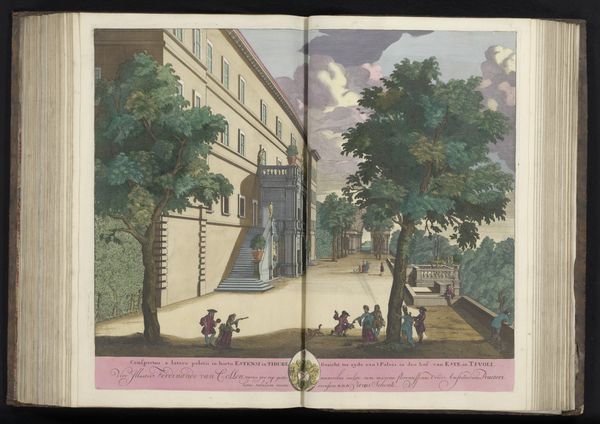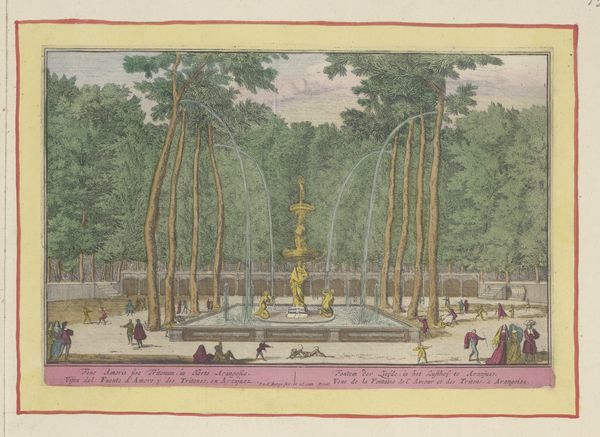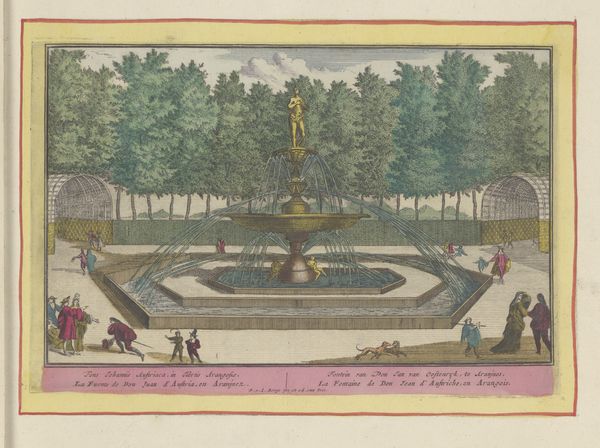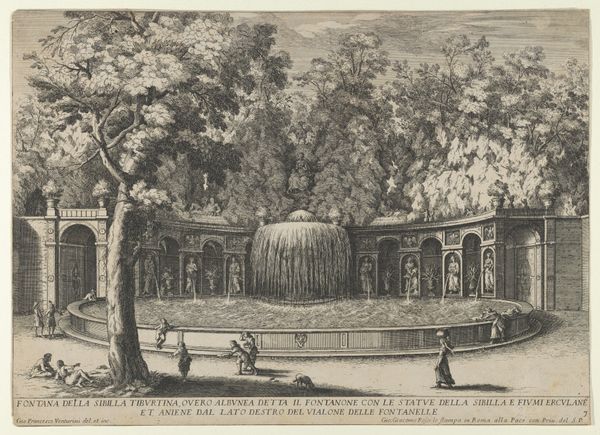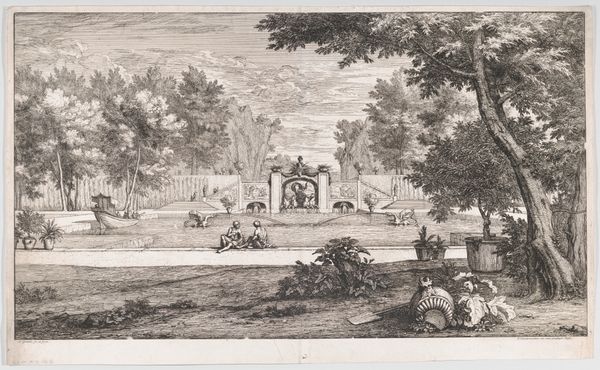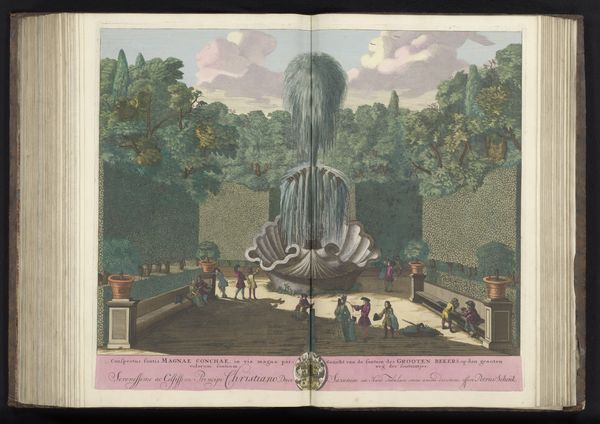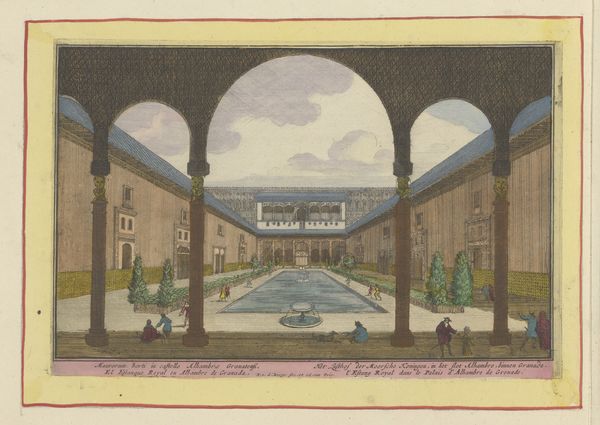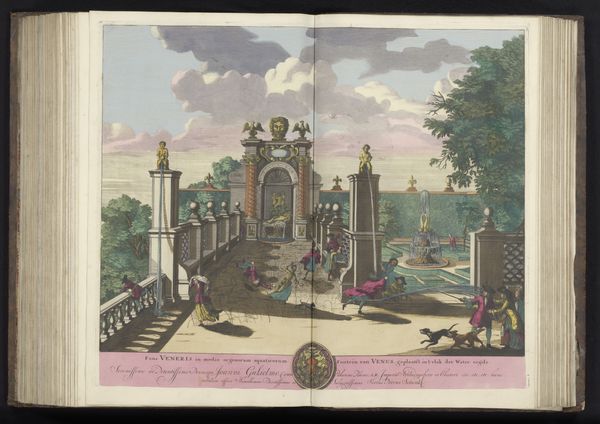
Fontein van de Tiburtijnse Sibille in de tuin van de Villa d'Este te Tivoli Possibly 1670 - 1717
0:00
0:00
drawing, coloured-pencil, print, engraving
#
drawing
#
garden
#
coloured-pencil
#
baroque
# print
#
landscape
#
coloured pencil
#
engraving
#
watercolor
Dimensions: height 495 mm, width 595 mm
Copyright: Rijks Museum: Open Domain
Curator: Oh, the 'Fountain of the Tiburtine Sibyl in the garden of the Villa d'Este at Tivoli'. It’s credited to Pieter Schenk, possibly dating back to the late 17th or early 18th century. Looking at this drawing, what leaps out at you? Editor: Honestly? A dream, slightly faded and certainly romantic. It has a theatrical quality, almost like a stage set with the fountain as the grand centerpiece. Curator: It is rather baroque in its flamboyance. I get a sense of almost decadent luxury. You’ve got engravings, coloured pencils and maybe even some watercolour working together. It feels less like capturing reality and more like building an ideal. Editor: The dream of aristocracy, for sure. All that cascading water, those classical statues nestled in their niches… It speaks to power, doesn't it? These gardens were designed, essentially, as theaters of the self. What narratives are they meant to project? What sort of subject could move around in such a space? Curator: Perhaps one who wished to feel at one with the ancients. The Villa d'Este, as a whole, revels in antiquity, doesn't it? I feel the pull towards something classical and timeless and maybe it also whispers of empire. Editor: Absolutely. And a carefully constructed timelessness, at that. Look at how nature is meticulously controlled: water sculpted into geometric falls, greenery manicured within strict borders. It speaks volumes about the era's desire to dominate and the human relationship to nature and space. And let's be real, those statues, the classical references...they are a wink at power structures and the cultural currency of ancient history, a history predominantly accessed and narrated by wealthy men. Curator: Yet there’s also something fragile about this rendered on paper, with those subtle colour variations achieved with the colored pencils, it also reveals fragility. Maybe all of this constructed grandeur, even in real life, has always carried the seeds of its own eventual undoing. Editor: I agree, It makes you wonder what futures those seeds will produce, especially in this tumultuous climate crisis. Looking at all of the Villa d'Este's manufactured artifice, the more aware I become that nothing remains fixed in nature and time. Curator: Hmm, there is much to contemplate and to discover.
Comments
No comments
Be the first to comment and join the conversation on the ultimate creative platform.
